
About UsThe Numismatic Bibliomania Society is a non-profit organization promoting numismatic literature. For more information please see our web site at coinbooks.org SubscriptionsThose wishing to become new E-Sylum subscribers (or wishing to Unsubscribe) can go to the following web page link MembershipThere is a membership application available on the web site Membership Application To join, print the application and return it with your check to the address printed on the application. Membership is only $15 to addresses in the U.S., $20 for First Class mail, and $25 elsewhere. For those without web access, write to: David M. Sundman, Secretary/TreasurerNumismatic Bibliomania
Society AsylumFor Asylum mailing address changes and other membership questions, contact David at this email address: dsundman@LittletonCoin.com SubmissionsTo submit items for publication in The E-Sylum, just Reply to this message, or write to the Editor at this address: whomren@coinlibrary.com
BUY THE BOOK BEFORE THE COINYou won't regret it! |
- WAYNE'S WORDS: THE E-SYLUM NOVEMBER 11, 2012
- NEW BOOK: STANDARD CATALOG OF WORLD COINS 1801-1900, 7TH EDITION
- NEW BOOK: GUIDE TO INDIAN PAPER MONEY
- NEW BOOK: KOTALINGALA COINS
- NEW CATALOG: FRENCH MEDALLIC ART IN THE 19TH AND 20TH CENTURY
- BOOK REVIEW: THE ONLINE GUIDE BOOK TO UNITED STATES COINS
- BOOK REVIEW: CHIPS AND COUPONS IN OLD SHANGHAI
- EARLIEST KNOWN MEMBERSHIP CERTIFICATE DONATED TO ANA LIBRARY
- HOW CONTEMPORARY WERE 'CONTEMPORARY COUNTERFEITS'?
- MORE ON THE 1868 ALUMINUM PATTERN PROOF SETS
- PATTERN 1814 PLATINUM HALF DOLLAR WITH PUNCHMARKS
- THE BLACK NUN OF THE BANK OF ENGLAND
- NOTES FROM E-SYLUM READERS: NOVEMBER 11, 201
- MORE ON THE RUSSIAN BEARD TOKENS
- QUERY: GUIDE TO ANCIENT NUMISMATICS AUTHOR RAYMOND LADD SOUGHT
- QUERY: SECURITY EDGES ON BRITISH AND BRITISH COMMONWEALTH COINS
- QUERY: 'FLOYD HOURS' ALTERNATIVE CURRENCY IMAGE SOUGHT
- QUERY: FORT BLISS MEDAL INFORMATION SOUGHT
- JOHN QUINCY ADAMS GOLD ERIE CANAL COMPLETION MEDAL SOLD
- SOME HERITAGE SALE 1177 COLONIAL LOTS
- BALTIMORE SHOW WAR OF 1812 MEDALS EXHIBIT
- RESEARCHERS STUDY THE 1776 CONTINENTAL CURRENCY COINAGE
- THE U.S MINT'S CODED TELEGRAMS
- BUSINESS VIDEOS ON THE FEDERAL RESERVE AND BITCOINS
- SQUARE-LIKE IZETTLE PAYMENT SYSTEM ARRIVES IN THE U.K.
- SOME NEW COIN DESIGNS: NOVEMBER 11, 2012
- NEW CANADIAN VALOUR ROAD VICTORIA CROSS MEDAL EXHIBIT
- MILTON GREGG'S STOLEN VICTORIA CROSS SOUGHT
- BANCO CENTRAL DEL ECUADOR'S MUSEO NUMISMATICO
- WEB SITE: PORTUGUESE NUMISMATIC STUDIES
- THOMAS KINDER AND THE HONG KONG MINT
- ARTICLE ON ISAAC NEWTON AT THE MINT
- 250,000 PENNIES MAKE FOR UNIQUE FLOORING
- 120,000 PENNIES ON A FLORIDA BILLBOARD
- AND NOW, A PENNY-COVERED BATHROOM FLOOR
- FEATURED WEB PAGE: LIBERTY SEATED DIMES DIE VARIETIES
WAYNE'S WORDS: THE E-SYLUM NOVEMBER 11, 2012

New subscribers this week include Maureen Levine and Paula Turner. Welcome aboard! We have 1,603 email subscribers, plus 198 followers on Facebook.
Some subscribers recently have reported not getting their emailed issues. Many of these were Yahoo addresses. I checked with our support folks who report: "Yahoo frequently gives us fits as they tend to greylist us on a regular basis, simply because we send so much mail. Unfortunately, they provide zero ways to manage this, so we are simply subject to their whims." They're doing their best to work the problem, so please bear with us. Sorry!
This week we open with word of three new numismatic books, an upcoming exhibit catalog, and two book reviews. Other topics include the earliest known ANA membership certificate, war of 1812 medals, the Mint's coded telegrams, and some new coin designs.
To learn more about security edges, French medallic art in the 19th and 20th century, the Hawala notes of Saurashtra and the Black Nun of the Bank of England, read on. Have a great week, everyone!
Wayne Homren
Editor, The E-Sylum
NEW BOOK: STANDARD CATALOG OF WORLD COINS 1801-1900, 7TH EDITION
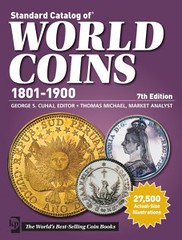 Krause Publications has released a new edition of the Standard Catalog of World Coins 1801-1900.
Krause Publications has released a new edition of the Standard Catalog of World Coins 1801-1900.
This seventh edition covers all mint-issue coins of the world from 1801 to 1900, including tokens, patterns, sets, etc., fully illustrated and offering the most up-to-date pricing in five grades. The 19th century produced some of the most popular classic coinage in world monetary history. In the past three years, thousands of these numismatic treasures have appeared in high-profile auctions worldwide, bring record prices and driving the demand for more.
Other features include:
- 100 years of world monetary history portrayed in coins from every nation existing during the 19th century
- Completely analyzed and updated pricing
- Fully illustrated with hundreds of improved or new images
- Expanded descriptions for obverse and reverse sides to aid the collector in proper identification of coins
This book is for the beginner to the expert interested in world coins. This is must for dealers, researchers and investors throughout the world. This catalog represents the only English language authoritative reference for the entire world in one volume and appeals to the value-conscious.
For more information visit
www.sellcoinbooks.com/world-coin-books/standard-catalog
-of-world-coins-1801-1900-7th-edition
About the Authors
George Cuhaj is an experienced and accomplished numismatist and researcher. George is a collector with a passion for this hobby, as well as several others. George, a former cataloger for both Stack's Auction House in New York and the American Numismatic Society offers a wealth of knowledge to the KP line. George continues to develop his network of over 175 dedicated contributors.
Tom Michael has performed in-depth price analysis for the KP numismatic book line for nearly 21 years. He travels across the nation and most recently, to Berlin, Germany, to connect his network of collectors and dealers, to create the most accurate database of world coin market values.
NEW BOOK: GUIDE TO INDIAN PAPER MONEY
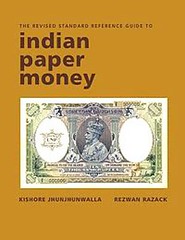 The Revised Standard Reference Guide to Indian Paper Money is a 2012 book by Rezwan Razack and Kishore Jhunjhunwalla. The book is a comprehensive compilation of facts, milestones, and other details regarding paper money in India. It was published in India by Coins & Currencies. Kishore Jhunjhunwalla and Rezwan Razack are avid collectors of Indian currency.
The Revised Standard Reference Guide to Indian Paper Money is a 2012 book by Rezwan Razack and Kishore Jhunjhunwalla. The book is a comprehensive compilation of facts, milestones, and other details regarding paper money in India. It was published in India by Coins & Currencies. Kishore Jhunjhunwalla and Rezwan Razack are avid collectors of Indian currency.
The book traces the evolution of Indian currency dating back to 1770. It captures the various nuances of modern day currency as well as incidents that helped shape this sector over the years. The book is in its second edition -- the first was authored by Jhunjhunwalla, whose collection was later purchased by Razack. The revised edition was published after 10 years of research. The book was introduced to the public by Uma Shankar, Regional Director of the Reserve Bank of India on January 13, 2012.
The Revised Standard Reference Guide to Indian Paper Money includes high resolution colour images of notes from Semi-Government and Presidency Banks, which functioned until 1861. The Government of India (British Raj) then undertook the issue of banknotes in 1861, and that is when all Early, Private, and Presidency Banks’ currency issues ceased. The Government of India issued banknotes in 1861 which were uniface with a portrait of Queen Victoria, and underprinting was introduced to the portrait in the series beginning 1867.
Vignettes in the book include the history of Indian bank notes dating back to 1770, when the Bank of Hindostan, a private bank located in Calcutta issued its first banknotes. However, the earliest banknote to still survive is dated 1810, by the Bank of Bengal. The book includes a comprehensive listing of all Indian banknotes since 1770.Early on, all paper currency of India was printed by the Bank of England and shipped to India for distribution. The British India banknotes of King George V were also printed in England.
In 1928, the India Security Press at Nasik became functional and took over from the Bank of England Press the printing of notes. In 1935, the Reserve Bank of India was established, and since then it has been the only currency-issuing authority and monetary agency for India. The King George VI Portrait Series were in circulation from 1936 till 1947. The series of King George V and King George VI were also overprinted for use in Burma. The overprinted banknotes of King George VI were also used in Pakistan until 1948.
The book also deals with banknotes since Indian independence, up to the current series of banknotes with the portrait of Mahatma Gandhi. These include the special-issue notes intended for use in the Persian Gulf for the Trucial States, as well as money used by the Hajjpilgrims.
The Osmania notes of Hyderabad of 1919-1952 also form a part of this book. Also listed are the issue of banknotes by Jammu and Kashmir and the Hawala notes of Saurashtra. The scope of this book includes the issues of Indo-Portuguese notes for Goa and Indo-French territories at Pondicherry. The cash coupons of Indian Princely States that were printed on paper were issued to counteract the shortage of metal during World War II. The Prisoner of War coupons used as money by the India-interned prisoners of the Anglo-Boer War of 1899-1902, World War II, and the Indo-Pakistani War of 1971 are also illustrated.
The book has an entire chapter on Essays, Patterns, Proofs and Trials, which displays many of the best Indian banknotes that were designed but never made it into circulation.
Authors (s): Rezwan Razack (Author) , Kishore Jhunjhunwalla (Author)
Format: Hardcover
ISBN-10: 8189752154
ISBN-13: 9788189752156
Pages: 626p.,
Pub. date: 08.11.2012, Revised ed.
Publisher: Coins & Currencies
Language (s): English
Bagchee ID: BB75212
List price: US $ 200,00
For more information or to order, see:
The Revised Standard Reference Guide to Indian Paper Money
(www.bagchee.com/books/BB75212/the-revised-standard
-reference-guide-to-indian-paper-money)
NEW BOOK: KOTALINGALA COINS
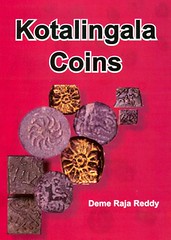 The discovery of Kotalingala coins in 1978 is considered as a very significant event in Andhra numismatics. The coins found at Kotalingala brought to light the names of many unknown Pre-Satavahana kings. The coins of Chimuka, the founder of the illustrious dynasty of Satavahana were discovered for the first time at Kotalingala. The book describes the staggering variety of coins which surfaced at Kotalingala and their significance to early Andhra history".
The discovery of Kotalingala coins in 1978 is considered as a very significant event in Andhra numismatics. The coins found at Kotalingala brought to light the names of many unknown Pre-Satavahana kings. The coins of Chimuka, the founder of the illustrious dynasty of Satavahana were discovered for the first time at Kotalingala. The book describes the staggering variety of coins which surfaced at Kotalingala and their significance to early Andhra history".
Authors (s): Deme Raja Reddy (Author)
Format: Hardcover
ISBN-13: 9789350500798
Pages: 67p., 25cm.
Pub. date: 01.01.2013, 1st. ed.
Publisher: B.R. Publishing Corporation
Language (s): English
Bagchee ID: BB75211
List price: US $ 62,00
For more information or to order, see: Kotalingala Coins (www.bagchee.com/books/BB75211/kotalingala-coins)
NEW CATALOG: FRENCH MEDALLIC ART IN THE 19TH AND 20TH CENTURY
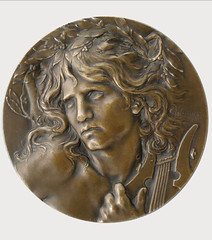 Probably your readers will be interested in knowing about a series of exhibitions focused on French medallic art in the 19th and 20th century that will be soon be held throughout France. The title of the exhibitions will be ‘L’art au creux de la main: La médaille en France aux XIXe et XXe siècles’, and the organizing authorities include:
Probably your readers will be interested in knowing about a series of exhibitions focused on French medallic art in the 19th and 20th century that will be soon be held throughout France. The title of the exhibitions will be ‘L’art au creux de la main: La médaille en France aux XIXe et XXe siècles’, and the organizing authorities include:
1) Petit Palais, Musée des Beaux-Arts (Paris) – Dec 10, 2012 until June 23, 2013 Address: Petit Palais, Musée des Beaux-Arts de la Ville de Paris, Avenue Winston Churchill, 75008 Paris ( www.petitpalais.paris.fr/fr/expositions/la-medaille-en-france-aux-xixe-et-xxe-siecles-lart-au-creux-de-la-main.
2) Bibliothèque nationale de France (Paris) – Dec 11, 2012 until April 7, 2013 On display, cast medals by Jules-Clément Chaplain, Oscar Roty and Jean-Baptiste Daniel-Dupuis, the ‘metallic history of war’ by Pierre Roche and pieces by medallists from the 1920s like Paul-Marcel Dammann, Claude-Léon Mascaux, and Pierre Turin. Address: Bibliothèque nationale de France, 5, rue Vivienne, Paris ( ( www.bnf.fr/fr/evenements_et_culture/anx_expositions/f.au_creux_de_la_main.html)
3) Musée des Arts Décoratifs (Bordeaux) – Dec 14, 2012 until March 18, 2013
The exhibition is organized together with the Paris Mint, which currently does not dispose of any facilities in Paris (building under renovation). The mise-en-scene is made by famous French designer Christian Lacroix. The focus of the exhibition will be the role of the Paris Mint in the promotion of medallic art in 19th and 20th century, and the famous Société des Amis de la Médaille Française founded by art critic Roger Marx in 1899. Address: Musée des Arts Décoratifs, 39, rue Bouffard, 33000 Bordeaux (
www.claudinecolin.com/fr/807-l-art-au-creux-de-la-main-la-medaille
-en-france-aux-xixe-et-xxe-siecles)
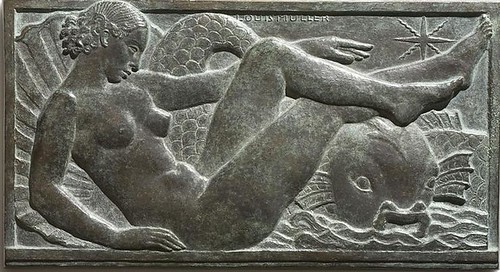
4) Musée des Beaux-Arts (Lille) – Dec 13, 2012 until June 30, 2013 The exhibition will focus on the important collection of the museum, which was based on important donations by baron Alphonse de Rothschild from 1880 until 1914. Visitors have the opportunity to see works by Jules-Clément Chaplain, Oscar Roty, Fréderic de Vernon and especially Hippolyte Lefebvre (who was born in Lille). Address: Palais des Beaux-Arts, Place de la République, 59000 Lille ( www.pba-lille.fr/spip.php?article2837)
5) Musée des Beaux-Arts (Lyon) – apparently starting on Nov 28, 2012 Address: Musée des Beaux-Arts de Lyon, 20 place des Terreaux, 69001 Lyon ( www.mba-lyon.fr/mba/sections/fr/expositions-musee/prochaines-expos/medaille_xix-xxe)
6) Musée d’Orsay (Paris) – dates still unclear The famous museum is the main organizer of the exhibitions, but up to now, no official announcement was made. Address: Musée d'Orsay, 62, rue de Lille, 75343 Paris ( www.musee-orsay.fr)
On the occasion of the exhibitions, a catalogue will be published under the title ‘L'art au creux de la main. La médaille en France aux XIXe et XXe siècles.‘ (Editor: Musée d'Orsay / Skira Flammarion, 228 pages, 320 illustrations).
BOOK REVIEW: THE ONLINE GUIDE BOOK TO UNITED STATES COINS
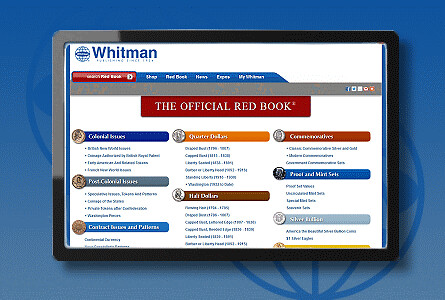
When it comes to being iconic in numismatic circles, nothing can top A Guide Book to United States Coins, universally known as the Red Book. This brightly colored source of information is often the first coin book bought by collectors, and hobby veterans are known to have decades worth of annual issues on their shelves.
Whitman Publishing has done a commendable job in taking this venerable print product into the 21st century with color photos and a bolder layout, but the final step – an on-line version of the Red Book – has just become a reality. It can be found at www.whitman.com.
The format and chronological listings of various series from Colonials to territorial gold line up in the electronic Red Book as they do in the print version. Click a series, and you’ll get there in varying lengths of time. I explored the e-Red Book on two different PCs and found loading could be slow at times. To be fair, my laptop could use more memory, but the other computer should have loaded faster.
Don’t expect dramatic changes between the traditional and Internet Red Books – and that’s a good thing. Why take a hugely popular and professionally designed product and add useless bells and whistles just because it can be done? The adage “If it ain’t broke, don’t fix it” applies here.
There are some important differences between the book and on-line version, but they may not be apparent to the casual collector. Specialists in certain series will appreciate expanded pricing for grades not listed in the 2012 edition.
The e-Red Book is an attractive and informative product and as most in the print media world recognize, the future is in digital publishing so it is not surprising that the Red Book is now available online. However rather than making the Redbook “downloadable” at a fixed price, Whitman has taken the path of making the e-Red Book into a subscription based online publication.
Since one would assume that the core numismatic information will change little, we can surmise that the only justification for a monthly subscription based model would be regular future updates to the prices displayed with every series. If that is the case, then the monthly subscription would make sense
So what’s the price to access the electronic Red Book? The current two-week “free trial” comes with a catch, the freebie is granted only after a credit card number is given and the customer opts for a monthly $9.99 fee or an annual $99.99 subscription. So the onus is on the subscriber to cancel their subscription within the 14 day trial period before the billing begins.
Well-known print publications such as the New York Times and Wall Street Journal have had a difficult time transforming their legacy print subscription based business models to Internet based pay-walls and most have failed to attract significant paying subscribers even at a fraction of the print version. Since New Red Book print editions can be purchased for around $15, it remains to be seen if Whitman can transition a large number of numismatists to pay $99 year for access to the computerized version of the Red Book, and how often the prices will be updated in the online version.
In any case we wish them well, and will follow up with more detailed observations and comments in a new series be are producing on Coin Prices and Values starting the first of the year.
To read the complete article, see: The New On-line Red Book: A Quick Review (www.coinweek.com/commentary/opinion/the-new-on-line-red-book-a-quick-review/)
BOOK REVIEW: CHIPS AND COUPONS IN OLD SHANGHAI
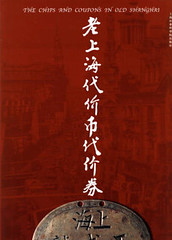 This book trends much more to a coffee-table book filled with page after page of wonderful photos with minimal explanation (all except for a very few words of that in Chinese) than it does to a catalog burdened with catalog numbers, values, or an attempt to arrange items into series. For example, page 128 starts a section entitled "Department Stores" with a short essay in Chinese and then page after page of photos of merchandise coupons, starting with a group from The Sincere Co., Ltd. and going until page 138, which starts the section entitled "Snacks & Candy Stores."
This book trends much more to a coffee-table book filled with page after page of wonderful photos with minimal explanation (all except for a very few words of that in Chinese) than it does to a catalog burdened with catalog numbers, values, or an attempt to arrange items into series. For example, page 128 starts a section entitled "Department Stores" with a short essay in Chinese and then page after page of photos of merchandise coupons, starting with a group from The Sincere Co., Ltd. and going until page 138, which starts the section entitled "Snacks & Candy Stores."
It covers a wide gamut, from metallic transportation tokens ["Tokens" would probably be a more accurate word in the English title than "Chips".], to many different merchandise coupons, to what look like Shanghai cigarette cards, to a very pretty encased postage stamp issued by EWO Beer. Even if you do read Chinese (and I don't, so I speculate a bit here) this work doesn't appear to go much beyond a pictorial survey of thousands of fascinating items from a long-gone world. But it sure is pretty....
As an aside, my copy came from coinsxzh on eBay; I've had a number of perfectly satisfactory dealings with him.
There are a few more images at Scott Semans' list of books: http://coincoin.com/bkCC.htm
To read the earlier E-Sylum article, see: QUERY: CHIPS AND COUPONS IN OLD SHANGHAI (www.coinbooks.org/esylum_v15n46a23.html)
EARLIEST KNOWN MEMBERSHIP CERTIFICATE DONATED TO ANA LIBRARY
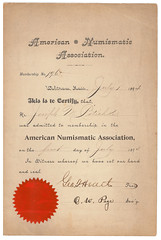 The earliest known surviving American Numismatic Association membership certificate, dated July 1, 1894, has been acquired by California real estate developer and long-time coin collector, Dwight Manley, and donated to the ANA. Manley’s donation also includes 16 other documents and materials dating back to the early years of the association that was founded in 1891 by Dr. George F. Heath of Monroe, Mich.
The earliest known surviving American Numismatic Association membership certificate, dated July 1, 1894, has been acquired by California real estate developer and long-time coin collector, Dwight Manley, and donated to the ANA. Manley’s donation also includes 16 other documents and materials dating back to the early years of the association that was founded in 1891 by Dr. George F. Heath of Monroe, Mich.
The items were purchased by Manley in the Oct. 6, 2012 auction conducted by David Sklow Fine Numismatic Books. The 6-by-9 inch ANA certificate of membership was described by Sklow as “possibly the rarest piece of history from the American Numismatic Association’s very early years.”
Manley requested that the certificate be displayed in the ANA library so that visitors to the association’s headquarters can see it. In 2003, the library was named in Manley’s honor in recognition of his life-long dedication to and financial support of the association.
“I’m a huge fan of the ANA and all that it stands for. I was both fortunate and amazed to able to buy these items that even the ANA didn’t have in their possession. I feel the best place for these unique, historic pieces of numismatica is in the ANA library where their beauty and romance can be enjoyed,” said Manley.
The 1894 ANA membership certificate was originally sent to Joseph Potichke of Massachusetts, and it reads: “Membership No. 196. Waltham, Mass. July 1, 1894. This is to certify, that, Mr. Joseph M. Potichke, was admitted to membership in the American Numismatic Association on the first day of July 1894. In witness whereof we have set our hand and seal.”
It is signed by then-ANA President Heath and ANA Secretary O.W. Page with a red wax seal affixed to the paper next to their signatures.
Manley also acquired from the auction and donated a brief letter handwritten by Page to Potichke, dated May 28, 1894 acknowledging his membership application. It was written on the only known surviving example of early ANA letterhead stationery that lists Board of Officers and Board of Trustees members in 1894. There are also two receipts to Potichke signed by Page for 50 cents in dues and a 50-cent initiation fee.
“I have never seen another of these early membership certificates, and that includes the archives of the ANA itself,” said Sklow, who serves as the ANA Secretary and Historian. “The certificate is a remarkable item, possibly unique, and a truly rare piece of ANA history. Coupled with the letter from Secretary Page and the two receipts it makes a complete accounting of Mr. Potichke joining the ANA 118 years ago when the ANA had not yet achieved its third birthday.”
In 1899, Dr. Heath reassigned membership numbers, and Potichke’s was changed from 196 to 72.
“This is a continuation of a number of significant donations made to the ANA by Dwight Manley. He’s made major donations to the Florence Schook School of Numismatics, to the ANA library’s renovation, and even donated the oldest illustrated numismatic book, which is now housed in the library’s rare book room,” said ANA Executive Director Jeff Shevlin. “His continued support and significant contributions help the ANA to keep strengthening the hobby.”
HOW CONTEMPORARY WERE 'CONTEMPORARY COUNTERFEITS'?
Tom DeLorey writes:
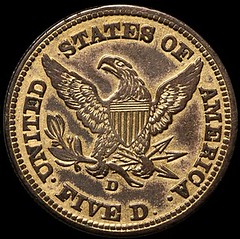 Doug Winter's gilt 1842-D half eagle is certainly a "contemporary counterfeit," but we must not be too literal with the word "contemporary." It could have been struck as late as the Civil War, when the equipment to do so was more commonly available, and the desperate shortage of hard currency might have made it a bit easier to pass. It could also have been struck anywhere in the North (most likely) or the South, wherever the model coin copied by the forger happened to end up.
Doug Winter's gilt 1842-D half eagle is certainly a "contemporary counterfeit," but we must not be too literal with the word "contemporary." It could have been struck as late as the Civil War, when the equipment to do so was more commonly available, and the desperate shortage of hard currency might have made it a bit easier to pass. It could also have been struck anywhere in the North (most likely) or the South, wherever the model coin copied by the forger happened to end up.
I have long surmised that the extensive series of German Silver "contemporary counterfeit" Capped Bust half dollars were probably made during the Civil War, but of course I cannot prove it. There is a fairly common German Silver 1861 Trime that may have been from the same forger, which is one reason why I suspect the German Silver halves of being Civil War issues. Or it could all be coincidence.
Perhaps the use of older dates was intended to lull the unsuspecting recipients into excusing design discrepancies by assuming "Maybe that's just how they did it back then." After all, genuine half dollars and half eagles of the early 1840's did show variances in device punches and lettering. Or, the counterfeiter of this piece might just have happened upon an 1842-D half eagle at random. We will never know.
To read the earlier E-Sylum article, see: A CONTEMPORARY COUNTERFEIT 1842-D HALF EAGLE (www.coinbooks.org/esylum_v15n46a24.html)
MORE ON THE 1868 ALUMINUM PATTERN PROOF SETS
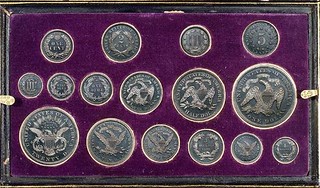
John Keyworth, Curator of the Bank of England Museum writes:
I am sorry to have to tell you that there is no 1868 aluminium proof set in the Bank of England. Briefly, the history of the Bank’s coin collection is as follows: its original collection of coins , begun in 1811, was given to the British Museum in 1865 to allow greater public access. The present collection was begun in 1932 with the aim of compiling a representative collection of British regal coins issued since 1694, the year the Bank of England’s foundation. A large number of old coins were held in the Cashier’s Department and further coins bought from dealers to fill gaps. Apart from a few rarities the collection was completed by 1950 at an approximate cost of £830! Further additions have been made since then, and continue to be made.
Tom Hockenhull, Curator of Modern Money at the British Museum writes:
I’ve had a quick look through the collection and cannot find anything. The transfer of objects from the Bank of England took place in 1865, predating the production of these coins by three years. I think it’s unlikely that they ever came to the British Museum.
To read the earlier E-Sylum article, see: QUERY: 1868 ALUMINUM PATTERN PROOF SETS WHEREABOUTS (www.coinbooks.org/esylum_v15n46a18.html)
PATTERN 1814 PLATINUM HALF DOLLAR WITH PUNCHMARKS
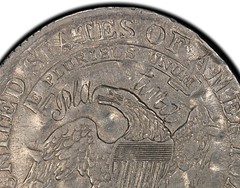
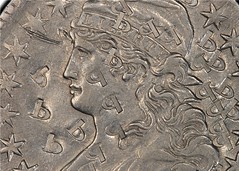
One of the most intriguing -- and mysterious -- pattern coins ever produced by the United States is now in a Professional Coin Grading Service (www.PCGS.com) holder: the unique 1814 platinum Capped Bust half dollar with nearly three dozen "P" punch marks. It is graded PCGS Secure Plus XF40.
PCGS will use a “new” Judd reference number, Judd-44a, to differentiate it from any other known platinum 1814 half dollar patterns assigned J-44 that do not have punch marks or the word, "Platina," engraved on the reverse. This particular coin was pictured in the original edition of the reference book, Pattern, Experimental & Trial Coins, authored by J. Hewitt Judd, MD, and the PCGS insert label identifies it as "Judd Plate Coin."
The coin is owned by Midwest collector Charles Link who describes himself as a "Bust half dollar and early American pattern enthusiast." He says "the platinum half is my favorite coin in my Bust half dollar collection. I never expected that I would have the honor of being a steward of this important part of American history, if only for a small snippet of its history."
Previous owners of this coin include notable numismatists George Woodside, Virgil M. Brand and Dr. Judd. Link acquired the coin for $138,000 at the Heritage Auctions Chicago auction in August 2011. It was displayed on his behalf by Harry Laibstain Rare Coins at the recent American Numismatic Association World's Fair of Money convention in Philadelphia, and will be displayed by Laibstain (booth #354) at the upcoming Whitman Coin & Collectibles Baltimore Expo, November 15 - 18, 2012.
PCGS CoinFacts notes that there may be two other examples of the 1814 platinum pattern half dollar without the punch marks and engraving. One such coin is part of the National Numismatic Collection at the Smithsonian Institution, and it has an obvious test cut. Another example is rumored to exist based on a mention of it by researcher Walter Breen in a 1974 auction catalogue; however, that coin has not been confirmed or seen in the 38 years since then.
The full PCGS CoinFacts description and an illustration of the J-44a pattern are online at www.pcgscoinfacts.com/Coin/Detail/515721 .
THE BOOK BAZARRE
THE BLACK NUN OF THE BANK OF ENGLAND
The Black Nun of the Bank of England
Last week I published an item about haunted banks. One of the stories was about the “Black Nun,” who is said to haunt the Bank of England, making ghostly appearances at the bank’s courtyard, where she’s buried. I wondered about that last part - why would anyone be buried in the Bank's courtyard?
Gar Travis found this reference:
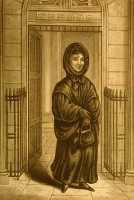 "Upon her death she was buried behind the bank in the yard of the now demolished church which is now covered over by an enclosed courtyard for the Bank. The church behind the Bank of England was St Christopher le Stocks which dated back to 1282, though it had been altered many times and rebuilt after being destroyed in the 1666 Great Fire of London. The church was demolished when the bank was extended in 1781. The remains of those buried in the churchyard were relocated to Nunhead Cemetary during work in 1867 and 1933."
"Upon her death she was buried behind the bank in the yard of the now demolished church which is now covered over by an enclosed courtyard for the Bank. The church behind the Bank of England was St Christopher le Stocks which dated back to 1282, though it had been altered many times and rebuilt after being destroyed in the 1666 Great Fire of London. The church was demolished when the bank was extended in 1781. The remains of those buried in the churchyard were relocated to Nunhead Cemetary during work in 1867 and 1933."
One evening in 1991, while enjoying a nice walk on my first visit to London, I nearly bumped into a woman. Apparently I was distracted by the sights because I certainly didn’t see her before almost walking into her. She was wearing a black dress and bonnet (of a style from the early 1800s much as I had seen on display in London’s Victoria & Albert Museum). She held a small purse in her hands. Her face was plump and decidedly English. Her expression was quite sad. We stood less than an arm’s reach from each other, face to face. Her eyes barely caught a glimpse of mine because she was, with apparent despair, dropping her head as if defeated. As she did so, she asked, “Have you seen my brother?” Uncomfortably, I said, “I don’t know your brother, so I don’t know if I’ve seen him.”
Then I looked behind her. Four meters away stood two men looking at me. I thought that perhaps they were escorting this troubled woman who was out in the dark of London asking strangers questions. The two men said nothing. Then she and I walked past each other. After I walked five or six steps, I turned around to watch her, concerned about her and curious to know what she was doing. But she wasn’t there. This was an open area. There was no obstacle that could have blocked my view of her. There was nothing for her to hide behind. My view was not obstructed by people. She just wasn’t there. Puzzled, I continued my walk and said out loud, “Well, I guess this is creepy old London.”
To read the complete article, see: The Bank of England and The Black Nun (www.mysteriousbritain.co.uk/england/greater-london/hauntings/the-bank-of-england-and-the-black-nun.html)
To read the earlier E-Sylum article, see: HAUNTED BANKS (www.coinbooks.org/esylum_v15n46a32.html)
NOTES FROM E-SYLUM READERS: NOVEMBER 11, 201
Schoen's Welt Munzkatalog
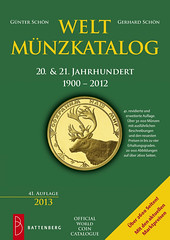 Alan Luedeking writes:
Alan Luedeking writes:
I thoroughly agree with P.K. Saha. Gerhard Schõn's WMK is far superior now to the KM cat, more complete and more detailed. Of course, if you read German that makes it even better!
To read the earlier E-Sylum article, see:
KRAUSE AND SCHOEN CATALOGS AND ULTRA-MODERN NUMISMATICS
(www.coinbooks.org/esylum_v15n46a10.html)
The Porter Counterfeit Currency Detector
David Fanning of Kolbe & Fanning writes:
Good issue, as always. We sold a Porter Counterfeit detector in Sale 120 (the 2011 NY Book Auction), lot 480. It brought $805 with the premium, right in the range Stack's-Bowers gives as an estimate. It was a pretty neat-looking device, but really difficult to manipulate and hard to imagine using with any success.
To read the earlier E-Sylum article, see: PORTER'S COUNTERFEIT CURRENCY DETECTOR (www.coinbooks.org/esylum_v15n46a13.html)
The Rare Book School
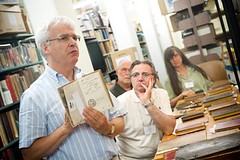 Dan Freidus writes:
Dan Freidus writes:
The schedule of classes for 2013 has been added to the Rare Book School's web site. RBS has been around for almost 30 years. They offer courses in a format somewhat similar to the ANA's Summer Seminar. While collectors are not uncommon, many of the students are librarians, rare book dealers, and other professionals.
For more information, see: http://www.rarebookschool.org/schedule/
ANS Unaffected by Superstorm Sandy
I haven't gotten any further reports on numismatists affected by Superstorm Sandy that hit the east Coast last week, with the exception of this report from American Numismatic Society librarian Elizabeth Hahn, who sent this on Monday:
We were closed all last week due to power outages (and our email servers were also down, which is why there were probably no emails from ANS staff being answered!) All is well here at the ANS, although various staff members are still dealing with power and heat issues at their homes. The ANS building is in the lower part of Manhattan and relatively near the water edge, but I don't think we had any flooding and just had power out for the entire week. I am back in today and was happy to see that the library is in fine shape.
Personally I was fine as well as I live in a part of Queens that never lost power and did not see much flooding (nor am I near where that horrible fire took place). The biggest challenge came from trying to get back into the city (which I didn't bother trying to do until today since the ANS was closed). There were quite a few rather large trees down around me as well, and I am amazed that wind alone could pull them up by their roots (in many cases, parts of the sidewalk were broken as the tree came uprooted).
It was quite a week and parts of lower Manhattan are indeed still flooded. I don't know details about the Fed, but I haven't heard anything negative yet and their website says they are open, so I imagine they were dealing with power issues like the rest of us.
Nördlingen Noah's Ark Klippe Silver Medal
Regarding the Noah's Ark klippe silver medal, William P. Houston of
Frankfurt am Main writes:
There is an error in the name of the town which issued the piece. Correct spelling is Nördlingen. Or, if one has a problem with foreign letters: Noerdlingen. Formerly a Free City, today it is in the state of Bavaria and has a population of something over 20,000.
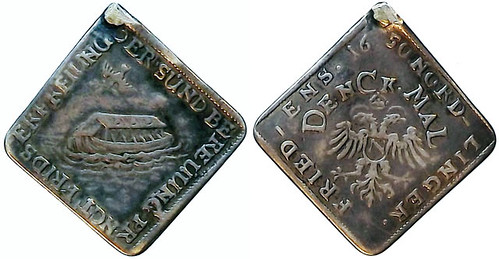
To read the earlier E-Sylum article, see: NOTES FROM E-SYLUM READERS: SEPTEMBER 2, 2012: Noah's Ark Klippe Silver Medal (www.coinbooks.org/esylum_v15n37a13.html)
Is That a Goat or a Dog?
Regarding goat tags, William P. Houston adds:
 Might it be that the gentlemen are trying to make this item something which it is not? It looks to me as if it might be just a rather unkempt dog. Could be a (non official) dog tag. Also seems to me I remember reading something somewhere sometime about there once having been a tax in Connecticut for guys who habitually told Shaggy Dog Stories. Maybe this is a tax tag for such a person.
Might it be that the gentlemen are trying to make this item something which it is not? It looks to me as if it might be just a rather unkempt dog. Could be a (non official) dog tag. Also seems to me I remember reading something somewhere sometime about there once having been a tax in Connecticut for guys who habitually told Shaggy Dog Stories. Maybe this is a tax tag for such a person.
To read the earlier E-Sylum article, see: QUERY: WHO'S EVER SEEN A GOAT TAG? (www.coinbooks.org/esylum_v15n37a14.html)
MORE ON THE RUSSIAN BEARD TOKENS
Rich Hartzog writes:
I forwarded the article on Russian Beard Tax countermarks to Dr. Gregory Brunk, noted countermark researcher.
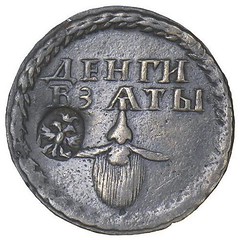 A lot has been written about them. Most are "novodels," which are official fantasies made by the Russian mint in the 19th century to satisfy collector demand. The countermarks, if I remember correctly, indicated payment of an additional year's tax on the original pieces. I think I have only seen photos of a couple of originals. All the rest are novodels with novodel cms added by the mint. All of them do have value. Below are articles that have been written on them in non-Russian journals.
A lot has been written about them. Most are "novodels," which are official fantasies made by the Russian mint in the 19th century to satisfy collector demand. The countermarks, if I remember correctly, indicated payment of an additional year's tax on the original pieces. I think I have only seen photos of a couple of originals. All the rest are novodels with novodel cms added by the mint. All of them do have value. Below are articles that have been written on them in non-Russian journals.
Bialkowski, A. 1973. Brodowy zeton (Genuine and Fake Beard Tax Tokens). Biuletyn Numizmatyczny 1973: 170-171.
Chizhov, S. I. 1900. Borodovie znake. Trudy Moskovskago Numizmaticheskago Obshtchestwa 1900: 331-352.
Jensen, J. S. 1975. Russiske skaegtegn fra Peter den Stores tid (Peter the Great Beard Tax Tokens). Montsamlernyt 1975 (Sept): 240-242.
Hawkins, W. 1844. Beard Tax Tokens. Numismatic Chronicle 1844 / 1845: 153-155.
Zander, R. 1948. Russian Beard Tokens. Numismatist 1948: 842-847. Reprinted in Journal of the Russian Numismatic Society 1983 (Fall): 14-23.
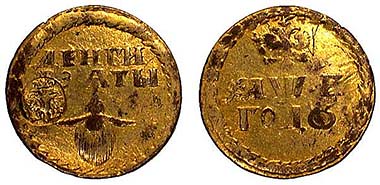
On September 5th, 1698, Peter – who was later to be called The Great – returned from his educational tour in the metropolises of Europe to Moscow. Of course, all important officials, the flunkeys and all those hoping for the Tsar to confer a favour on them gathered at the court the next morning. But instead of talking to them about Russia’s political future, Peter did something totally unexpected. He pulled a long and sharp razor from his bag and began to shave the commander in chief of the army. The latter was too stunned to react. The next in line followed, an important politician, a boyar stemming from the eldest and noblest Russian family. One Russian nobleman after the other was shaved except for three people. Peter spared only the Patriarch, a very old man and his own guardian.
At first, the shaving skills of the Tsar were restricted to those living closest to him. But shortly afterwards, Peter gave the order for the ordinary people to follow the example of the big wigs. The Tsar imposed a prohibition for every inhabitant of his country to wear a beard. Exceptions were made only for churchmen and peasants. Officials were sent out to supervise the ukase’s implementation and to personally shave anybody refusing to obey on the spot.
But Russia would not be Russia if the officials had not been willing to miss a beard for a small reward. Buying the illegal tolerance, however, could cost bearded men dearly. After all, each and every official encountering a bearded man was entitled to shave.
Peter saw that abuse and his subjects’ willingness to buy the beards with money. The westernization of the Russian nobility being accomplished, he could be generous with the commoners. Peter enacted a new law that enforced the peasants to shave, too, but allowed all Russians who did not want to part with their beards to acquire the right to keep them for a tax.
It was a progressive tax: the humble peasant paid two kopeks, a rich merchant up to 100 rubles. In return, they were given a copper token with the image of a beard and the Russian words “tax paid”.
To read the complete article, see: Peter the Great as his nation’s barber (www.coinsweekly.com/en/Peter-the-Great-as-his-nations-barber/8?&id=70&type=a)
To read the earlier E-Sylum article, see: QUERY: RUSSIAN BEARD TAX TOKEN COUNTERSTAMPS (www.coinbooks.org/esylum_v15n46a19.html)
QUERY: GUIDE TO ANCIENT NUMISMATICS AUTHOR RAYMOND LADD SOUGHT
Larry Gaye writes:
I need some help to locate the author, Raymond Ladd, or the publisher, JSD Numismatic Publications, of the soft covered book The Illustrated Grading Guide to Ancient Numismatics which was published in 1977. This is all the information given in the book.
I want to know if we can get permission to publish/ copy the book to our club website. If the author or publisher can't be located to grant permission how does one attempt to legally publish or copy their work? Any help would be greatly appreciated.
To read the complete article, see: Copyright Term and the Public Domain in the United States (copyright.cornell.edu/resources/publicdomain.cfm)
QUERY: SECURITY EDGES ON BRITISH AND BRITISH COMMONWEALTH COINS
Bruce W. Smith writes:
My question is about security edges on British or British Commonwealth coins. I want to know what coins were struck with security edges prior to 1937. The reason I ask has to do with an article I am writing on a group of Chinese pattern coins from 1936 and 1937. The 1937 coins were actually struck at the San Francisco Mint in 1938, with normal edge reeding. Some of the 1936 dollars and half dollars, however, were struck with security edges. Supposedly the blanks for these patterns were supplied by the Royal Mint to the Shanghai Mint where the patterns were struck. What coins did the Royal Mint strike with a security edge in 1936 or earlier? I've looked through the Seaby catalogs, but they seldom mention the edges. I have three books on British Commonwealth coins, but again, almost nothing about the edges.
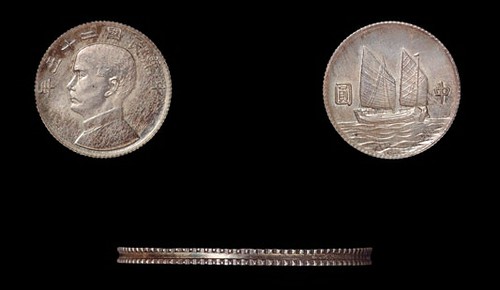
Bruce writes:
I don't think the USA has ever used a security edge on its coins, other than perhaps on an obscure pattern. Basically a security edge is reeded but with an indented groove in the center -- sorta like an Oreo cookie. There are variations; for example sometimes there are dots inside the groove. The idea is that a security edge prevented counterfeiting.
The Kann catalog of Chinese coins did not list the security edge coins because Kann did not own any of them at that time (1954). It was first noticed in the unreleased 2nd edition of Kalgan Shih's catalog of Chinese silver and gold coins (1951). I knew about the coins in the 1980's, but had never seen one nor a photo of the edge. The first time a photo of the security edge was published was in the June 2006 Cheng Xuan Auction in Beijing. The same auction house has another example in its current (November 2012) sale, with a photo, but the edge photo does not show up online. I was able to copy the photo from the 2006 sale, and it is attached.
QUERY: 'FLOYD HOURS' ALTERNATIVE CURRENCY IMAGE SOUGHT
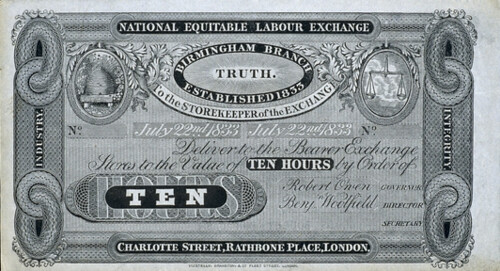
Robert Owen labor exchange note of 1833
Eric Schena writes:
There have been some recent discussions on local alternative currencies and, of course, I am interested in those issues from the Mid-Atlantic. I know that there have been a couple of issues in Virginia, specifically "Floyd Hours" from Floyd Co. I have had difficulty locating any of the Floyd notes or any solid information on them. Does anyone have any? I would be most interested in seeing what they look like.
To read an earlier E-Sylum article, see: MORE ON TIME BANKS AND TIME-BASED CURRENCIES (www.coinbooks.org/esylum_v15n38a22.html)
QUERY: FORT BLISS MEDAL INFORMATION SOUGHT
Robert Rightmire writes:Might you post the image of this Fort Bliss medal, 1 1/2 x 1 1/2 inches, for an identification? It bears the same image as the commemorative postage stamp that was issued the same year, 1948 (note stamp size is out of proportion).

JOHN QUINCY ADAMS GOLD ERIE CANAL COMPLETION MEDAL SOLD
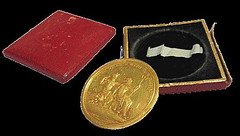 The 18-karat gold 1826 Erie Canal Completion so-called dollar medal presented to President John Quincy Adams by the Common Council of the City of New York sold at public auction Oct. 28 by Skinner Inc. for $156,000.
The 18-karat gold 1826 Erie Canal Completion so-called dollar medal presented to President John Quincy Adams by the Common Council of the City of New York sold at public auction Oct. 28 by Skinner Inc. for $156,000.
The 1826 so-called dollar medal celebrates the completion of the Erie Canal, which took more than eight years and $7 million to construct. The canal connects the Great Lakes to the Atlantic Ocean.
The price realized includes a 20 percent buyer’s fee.
Massachusetts dealer Stuart Levine acquired the medal in the auction. He told Coin World Oct. 30 he was thrilled with being able to acquire President John Quincy Adams’ presentation piece.
“It’s one of only two examples in private hands,” Levine said. “I knew I wanted to own it.”
Offered by Skinner Inc., a Boston auctioneer, the Adams presentation piece carried an estimate of $30,000 to $50,000.
The Adams medal is housed in its original square red leather case with cream-colored satin and blue silk velvet lined interior.
The lot description did not include any grade referencing condition, other than to note six rim dents or dings.
Adams’ medal was consigned to the Skinner auction by a direct descendant of the sixth president, according to firm officials. Skinner officials would not identify the descendant.
The medal, along with other personal items belonging to the president that were offered in the Skinner sale, apparently had been kept in a shoe box in the attic of the descendant’s home, according to a Skinner spokesperson.
The Oct. 28 Skinner offering was only the second time since 1925 for one of the gold versions to be offered at public auction.
The most recent prior sale of one of the gold 1826 medals was Sept. 27, 2007, when Heritage Auctions sold a gold medal for $63,250, which included a 15 percent buyer’s fee.
To read the complete article, see: Erie Canal Completion medal brings $156,000 (www.coinworld.com/articles/erie-canal-completion-medal-brings-156-000/)
SOME HERITAGE SALE 1177 COLONIAL LOTS
Sale 1177, Lot 3007: American Plantations Token
(c. 1828) TOKEN American Plantations 1/24 Part Real, Restrike MS63 PCGS. Newman 5-D, W-1160.
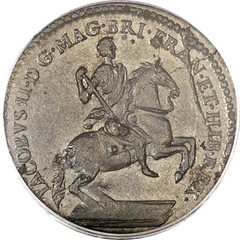
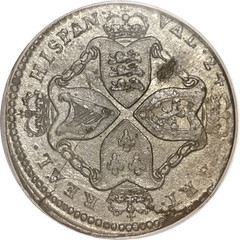
For the full lot description, see: coins.ha.com/c/item.zx?saleNo=1177&lotNo=3007
Sale 1177, Lot 3019: 1767 French Colonies Copper Sou
1767-A 9DEN French Colonies Copper Sou, RF Counterstamp MS62 Brown PCGS. CAC. Breen-701. This issue was struck for the French Caribbean colonies, but not circulated until counterstamped in 1793. This desirable representative is well struck on both the host coin and counterstamp, except for the left border of the beaded rim surrounding "RF" and the reverse center opposite the counterstamp. A lustrous and glossy golden-brown representative, essentially devoid of contact aside from the counterstamp. Slightly dished from the counterstamping.
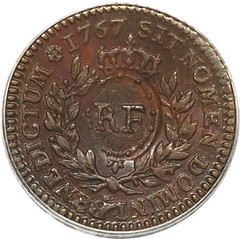
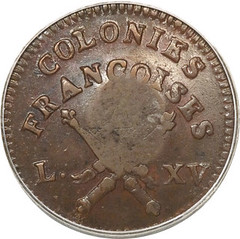
For the full lot description, see: coins.ha.com/c/item.zx?saleNo=1177&lotNo=3019
Sale 1177, Lot 3035: 1786 COPPER New York Copper
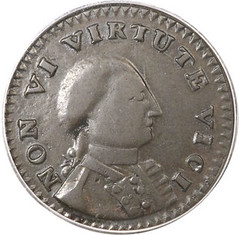 1786 COPPER New York Copper, NON VI VIRTUTE VICI, Small Head XF40 PCGS. CAC. Baker-13, W-5730, R.6. Ex: F. Dabney Caldwell. The NON VI VIRTUTE VICI coppers are a significant rarity coveted by both Washingtonia and Early American collectors. Breen (1988) and Rulau and Fuld (1999) assert that James F. Atlee, later of Machin's Mills, was the engraver. The Whitman Encyclopedia simply states "minter and location unknown."
1786 COPPER New York Copper, NON VI VIRTUTE VICI, Small Head XF40 PCGS. CAC. Baker-13, W-5730, R.6. Ex: F. Dabney Caldwell. The NON VI VIRTUTE VICI coppers are a significant rarity coveted by both Washingtonia and Early American collectors. Breen (1988) and Rulau and Fuld (1999) assert that James F. Atlee, later of Machin's Mills, was the engraver. The Whitman Encyclopedia simply states "minter and location unknown."
The legends are in Latin, as was the tradition during the late 18th century. The reverse legend, NEO-EBORACENSIS, is a belabored translation of New York. The obverse legend, NON VI VIRTUTE VICI, means "Not by violence but by excellence have I conquered." The portrait is almost certainly that of George Washington, since no other American in 1786 could command such praise.
Two other NON VI VIRTUTE VICI die pairs are known, the Large Head Baker-12 and the Shield Reverse Baker-13C. Both are extremely rare and neither is listed in the Guide Book. Although Rulau and Ford estimate about 25 specimens are known for the Small Head Baker-13, the variety seldom surfaces. John J. Ford, Jr., had an example, of course, which sold for $37,375 in a 2004 Stack's auction. We can find no other recent auction appearance of the variety.
For the full lot description, see: coins.ha.com/c/item.zx?saleNo=1177&lotNo=3035
BALTIMORE SHOW WAR OF 1812 MEDALS EXHIBIT
Howard Daniel noticed the Whitman announcement of the War of 1812 medals being exhibited this week at their Baltimore Coin Expo. Sponsored by John Kraljevich Americana, the medals will be shown at the Maryland War of 1812 Bicentennial Commission (Booth #1415).

I asked John Kraljevich for some more information, and he writes:
To help mark the bicentennial of the War of 1812, a private collector has loaned a superb selection of medals struck by the US Mint for display at the Whitman Expo. Maryland's War of 1812 Bicentennial Commission will also have a presence at the show. Some two dozen medals will be on display, all struck from the original dies produced to honor heroes of military and naval battles of our "Second War of Independence."
The highlights include original specimens in silver of the 1812 Stephen Decatur / USS United States vs. HMS Macedonian medal and the 1814 Edmund Gaines / Battle of Erie medal, in addition to gem quality bronze strikings and very rare early die state white metal issues. I wrote the label copy and served as curator of the exhibit, helping the collector decide which of his very nice medals to include.
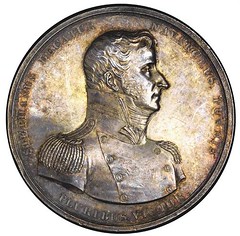
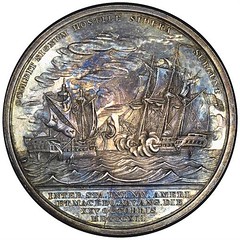
On October 25, 1812, Captain Stephen Decatur's frigate United States (44 guns) met the superior British frigate Macedonian (49 guns) off the coast of Madeira, near the northwest coast of Africa. In a brief but furious battle, Decatur suffered five men killed, seven wounded, while the British suffered 36 dead and 68 wounded. The Americans captured the Macedonian, one of the largest and newest ships in the British fleet. The captured vessel hoisted an American flag and served in the U.S. Navy until 1828. The silver Decatur medal seen here was struck at the same time as Decatur's personal gold medal and was likely presented to one of his officers who served in the battle. Decatur, a native of the Eastern Shore of Maryland, died in a duel in Bladensburg in 1820.
For more information on the show, see: expo.whitman.com/baltimore-winter-expo/schedule/
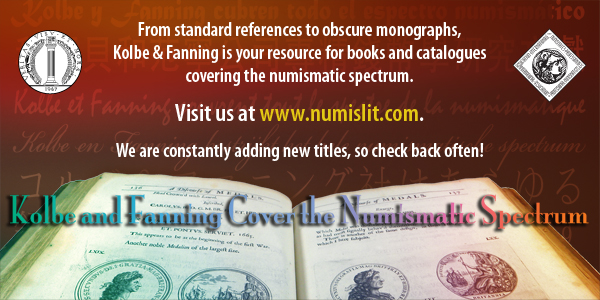
RESEARCHERS STUDY THE 1776 CONTINENTAL CURRENCY COINAGE
Eric writes:
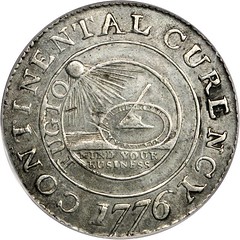 A little more than a year ago another researcher and I decided to work together to write an article relating to the Continental Currency Coined Dollars and we have been steadily working on it. It will probably be reasonably long. We have some new findings and are seeking some additional material. It seems to be a very complicated subject because as you are aware there is no known official authorization. When our work is ready for publication we will include in the text, a reference to The E-Sylum's recent entries on the subject as these entries show the need for a some further attempt toward even a partially acceptable solution. You state that you have not received "much response", and I am not surprised. Answers to old problems are tough.
A little more than a year ago another researcher and I decided to work together to write an article relating to the Continental Currency Coined Dollars and we have been steadily working on it. It will probably be reasonably long. We have some new findings and are seeking some additional material. It seems to be a very complicated subject because as you are aware there is no known official authorization. When our work is ready for publication we will include in the text, a reference to The E-Sylum's recent entries on the subject as these entries show the need for a some further attempt toward even a partially acceptable solution. You state that you have not received "much response", and I am not surprised. Answers to old problems are tough.
To read the complete article, see: WHERE WAS THE CONTINENTAL CURRENCY COINAGE MADE? (//www.coinbooks.org/esylum_v15n45a16.html)
THE U.S MINT'S CODED TELEGRAMS
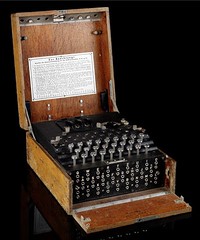 This German enigma enciphering machine will go under the hammer for the first time on the 14th November in Knightsbridge (estimated £40,000- 60,000). Built by Heimsoeth and Rinke in 1941, this is the 3 rotor version, used by Germany between 1938 and 1944. Patented by H. A. Koch, at the end of WWI, there was a recognised need for new technology with an imminent Second World War approaching.
Whilst this particular device was intended for commercial purposes, by 1939 the majority of enigma machines had been appropriated for German military use.
This German enigma enciphering machine will go under the hammer for the first time on the 14th November in Knightsbridge (estimated £40,000- 60,000). Built by Heimsoeth and Rinke in 1941, this is the 3 rotor version, used by Germany between 1938 and 1944. Patented by H. A. Koch, at the end of WWI, there was a recognised need for new technology with an imminent Second World War approaching.
Whilst this particular device was intended for commercial purposes, by 1939 the majority of enigma machines had been appropriated for German military use.
The secret operations at Bletchley Park were responsible for decoding the information communicated by this machine to gain a winning advantage over the Germans. The construction of the machine Colossus at Bletchley Park, thanks to the efforts of British Intelligence, meant the messages scrambled by the enigma machine could eventually be decoded in under twenty-four hours, leading the allies to an early victory.
To read the complete article, see: Extremely rare WWII German enigma enciphering machine on sale at Bonhams (www.artdaily.org/index.asp?int_sec=2&int_new=58769#.UJ6xa4dlEfM)
Roger Burdette writes:
There were quite a few code machines used from the latter 19th century to the WW-II period. Most were commercial devices intended for production of coded telegrams. This was used to reduce the cost of telegrams by replacing multi-word phrases with single word text. The U.S. Mint used this from about 1910 to 1925, but I don't know if they used a machine or just a code book. Here's an excerpt from the book draft "From Mine to Mint" that explains a little more.
Coded telegrams were in common use by business and government from about 1845 to the 1930s. Thousands of code books were published or issued privately, but they are largely forgotten now. There were also code generating machines that could be used to develop a business’ own private codes and cyphers. They present a finely-grained window into their respective domains and their time.
Dictionaries of phrases and codewords, or cipher components, were commonly used in the age of telegraphy to compress messages and thereby economize on wire costs. A telegram from the United States to England could cost 25-cents per word during the early 1900s. They were also used to achieve a basic level of secrecy for communications.
There were different kinds of codes, different arrangements of phrase matter, different means of assembling and dis-assembling messages. Typically, a sender would choose from the dictionary’s selections those phrases or expressions (about the quality of cotton, for example) that satisfied his intentions, and take the codewords associated with the selections. It is the coded message, packaged for transport, that would be processed and sent along its way by the telegraph or cable company. The recipient of the message would unpack its original meanings by looking the code words up in another copy of the same dictionary – they were listed in alphabetical order – or by following a sequence of other procedures to arrive at the meaning.
BUSINESS VIDEOS ON THE FEDERAL RESERVE AND BITCOINS
Web site visitor Emily Stewart writes:
I recently started a video series highlighting business related issues. After your site popped up in my quick research, I thought I’d reach out, hoping your readers might find some value in this video. It highlights the Federal Reserve system and illustrates some facts that most may not have known about.
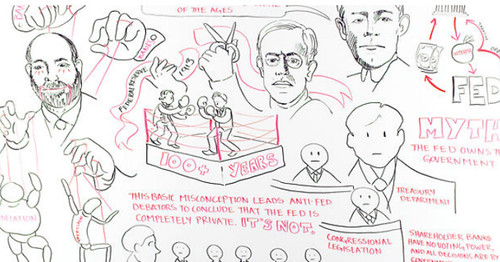
To watch the video, see: What’s the Big Deal About the Feds? (www.onlinemba.com/blog/fedreserve/)
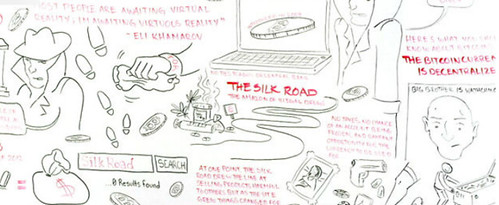
To watch the video, see: Bitcoins: The Currency of the Darknet (www.onlinemba.com/blog/bitcoins/)
SQUARE-LIKE IZETTLE PAYMENT SYSTEM ARRIVES IN THE U.K.
Wednesday could see another important step towards the modernisation of money. iZettle, a device that allows small traders to take credit card payments, is arriving in the UK after a successful rollout in other markets. But a failure by big payment firms to agree common standards on how we use these mobile money systems could mean the whole idea fails to fly.
iZettle is a small card-reader that plugs into iPhones, iPads and a number of Android smartphones or tablets. It is designed for use by any small trader who can't afford the infrastructure needed to take credit card payments. You hand over your card to the stallholder - or plumber or window-cleaner - it is swiped through the device, and then you sign for your purchase. The merchant pays a commission of 2.75% a transaction, and the consumer gets to use their plastic rather than cash in new places.
I tried it out at a launch event and it worked pretty smoothly. A scented candle manufacturer told me she had been using a trial device for some months, and had found it was an excellent way of taking payments at craft fairs.
iZettle was launched in Sweden a year ago, and according to the co-founder Jacob de Geer, it is now used by more than 75,000 small businesses and individuals in six countries. In Sweden, he told journalists at the launch, 700 blacksmiths are using the device. "It's bringing new merchants to the table. My ambition is to democratise card payments."
Payments with Mastercard and American Express are quicker than with Visa cards The big question in the UK, though, is whether consumers will fancy the idea of having their cards swiped into this device. And here there's a hitch. There are big names backing iZettle including the mobile operator EE, and the payments firms Mastercard and American Express.
But the other major force in the card industry, Visa, is an investor in a much bigger player in the mobile payments area. Square, started by the Twitter founder Jack Dorsey, is making rapid progress in the United States market and is now valued at something over $3bn.
To read the complete article, see: iZettle and the modernisation of money (www.bbc.co.uk/news/technology-20226894)
SOME NEW COIN DESIGNS: NOVEMBER 11, 2012
Austria 25 Euro Bimetallic, To Be Issued In 2013
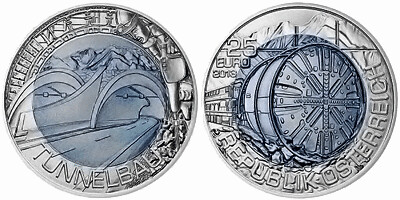
I really like this one. Is that a tunnel-boring machine on the reverse? You don't see THAT on a coin every day. I think the design really works - it's a natural for the round bimetallic format.
Latvia 1 Lats Coin For Sculptor Karlis Zale
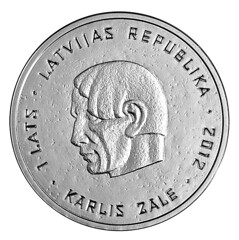
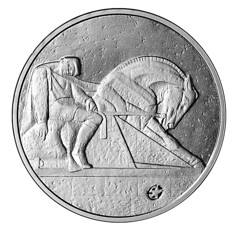
It's a very plain style, but I imaging it mimics the style of the sculptor it honors. I kinda like it, particularly the reverse (the side on the right - I think that's the reverse...)
Italy 10 Euro on Michelangelo reverse
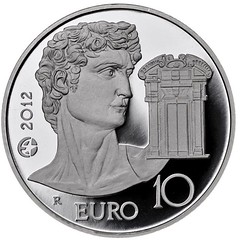
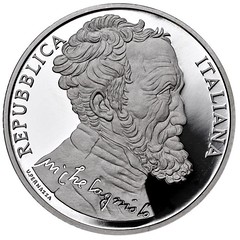
It's hard for any artist to top Michelangelo, but I think this one really does Michelangelo justice. Nice, clean design.
Italy 5 Euro coin on 150 years of Lira

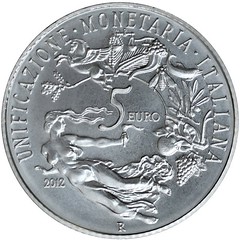
I like the use of a classic design (plus I always give extra points to art picturing naked ladies...)
NEW CANADIAN VALOUR ROAD VICTORIA CROSS MEDAL EXHIBIT
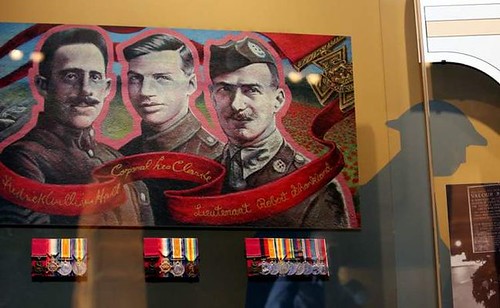
A collection of all three Victoria Cross medals awarded during the First World War to residents of Winnipeg’s Pine Street, later renamed Valour Road, was unveiled today at the Canadian War Museum.
This collection was completed with the recent acquisition of the medal awarded in 1915 to Company Sergeant Major Frederick William Hall. The War Museum in Ottawa acquired the Valour Road Victoria Crosses of Lieutenant Robert Shankland and Corporal Lionel B. Clarke in 2009 and 2010 respectively.
Only 96 Victoria Crosses were awarded to Canadians in the medal’s 156-year history, making this coincidence exceptional. With the acquisition of the Hall Victoria Cross, the Canadian War Museum now has 33 Victoria Crosses in its collection, including one from the nineteenth century, 28 from the First World War and four from the Second World War.
"Valour Road is remarkable for its association with three recipients of this renowned award for bravery. The three men were honoured for their heroic acts in different battles and in different years, but all were from a single block of the same residential street," said Mark O’Neill, President and CEO of the Canadian Museum of Civilization Corporation, which operates the Canadian War Museum. "These medals belong together and so they shall remain in perpetuity, held in the name of all Canadians."
The trio of medals will remain on permanent display in the Royal Canadian Legion Hall of Honour. In 2014, this famous trio of Victoria Cross Medals will be loaned to the Manitoba Museum in Winnipeg for a special exhibition commemorating the role of the Winnipeg Rifles and Queen’s Own Cameron Highlanders regiments during the First World War.
To read the complete article, see:
Valour Road Victoria Cross medals find new home at war museum
(www.winnipegfreepress.com/breakingnews/Valour-Road-Victoria
-Cross-medals-find-new-home-at-war-museum-177329951.html)
For more information at the War Museum site, see:
Famous trio of Victoria Cross medals unveiled at the Canadian War Museum
(www.warmuseum.ca/media/news/famous-trio-of-victoria-cross
-medals-unveiled-at-the-canadian-war-museum/)
MILTON GREGG'S STOLEN VICTORIA CROSS SOUGHT
Three times he crawled through barbed wire as German machine guns rattled death above, ignoring his wounds to carry grenades that would save his brigade from annihilation.
Much is known about how Lieutenant Milton Gregg became a hero, one of only 94 Canadians awarded a Victoria Cross, a medal so rare it has sold for $400,000 at auction.
But what became of that Victoria Cross — that’s become an unsolved crime whose origins were in a military museum in London.
“They took something that was sacred,” Lt.-Col. John Fife said.
Fife was once commanding officer of the 2nd Battalion of The Royal Canadian Regiment, whose storied history includes only two Victoria Crosses. When Gregg died in 1978, his family donated his medals to the regimental museum at Wolseley Barracks in London.
Seventeen months later, on Christmas morning 1979, duty officer Andrew Butters was wakened to awful news. Someone had stolen the Victoria Medal.
“I was shocked that someone would have the audacity to steal something like that,” Butters recalled.
Now, Fife is determined to find the medal — the search is on again.
“Come forward, no questions asked, and do the right thing by returning these medals so they can be displayed for future generations to see and learn about this great Canadian, great New Brunswicker and great member of The Royal Canadian Regiment,” said Fife, who is now deputy commander of the Combat Training Centre at Canadian Forces Base Gagetown in New Brunswick.
To read the complete article, see: Hunt on for storied vet's ripped-off Victoria Cross (www.lfpress.com/2012/11/09/hunt-on-for-storied-vets-ripped-off-victoria-cross)
BANCO CENTRAL DEL ECUADOR'S MUSEO NUMISMATICO
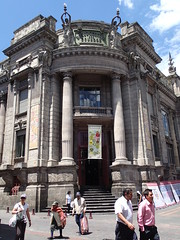 My wife and I just returned from a trip to Ecuador, which included several days in Quito, its capitol. As many of the E-Sylum readers already know, Ecuador now uses the US dollar alongside its own minor coinage (centavos). I was delighted to find a numismatic exhibit in the Museo Numismatico at the Banco Central del Ecuador. Admittance was $1 US, which even included a postcard with a photograph of an 1838 Ecuadorian eight escudos.
My wife and I just returned from a trip to Ecuador, which included several days in Quito, its capitol. As many of the E-Sylum readers already know, Ecuador now uses the US dollar alongside its own minor coinage (centavos). I was delighted to find a numismatic exhibit in the Museo Numismatico at the Banco Central del Ecuador. Admittance was $1 US, which even included a postcard with a photograph of an 1838 Ecuadorian eight escudos.
The museum has a nice collection of Ecuadorian coins from the 16th century to present and an extensive collection of currency. The early republican coinage was particularly impressive especially the eight escudos, which are all quite rare. The exhibits were not well illuminated, but most coins were reasonably viewable on one side. Alas, my Spanish is poor and the descriptions were generally not translated to English, but it was still quite a pleasant experience. Regretfully no photography is allowed in the museum.


An 8 escudo from the Heritage archives
For more information, see: MUSEO NUMISMÁTICO (www.bce.fin.ec/contenido.php?CNT=ARB0001010)
WEB SITE: PORTUGUESE NUMISMATIC STUDIES

My best regards from sunny Lisbon and my compliments for your E-Sylum editorial site and forum, which I visited for the first time few minutes ago, while searching the Web for editorial novelties under the theme "Portugalöser".
I am happy that my name has been referenced as a source of information regarding those interesting European gold coins, and I am more than pleased to let you know that my editorial site, www.estudosdenumismatica.org, holds the great majority of my numismatic works and studies published over the last 38 years.
Like NBS, "Portuguese Numismatic Studies" is a non-profit organization intending to promote cultural knowledge worldwide. All studies are in PDF format and are freely available for download.
To visit the Portuguese Numismatic Studies site, see: www.estudosdenumismatica.org
To read the earlier E-Sylum article, see: VOCABULARY WORDS: PORTUGALÖSER AND PORTUGUEZ (www.coinbooks.org/esylum_v15n40a08.html)
THOMAS KINDER AND THE HONG KONG MINT
I notice the following from your web page concerning test coins manufactured by Watt & Co. for the Hong Kong Mint at www.coinbooks.org/esylum_v14n03a23.html
'This is a machine trial piece by J Watt and Co struck to test a coining press they manufactured for the Hong Kong mint which was later used to strike the Hong Kong silver dollars. Specimens exist with both a plain and an engrailled edge.'
During my research for a book I am writing, I came across the following information from: P Kevin MacKeown, 'The Hong Kong Mint, 1864-1868: Source of an Early Engineering Experiment', in Journal of the Royal Asiatic Society, Hong Kong Branch, vol 47, 2007, pp. 41-79. (By the way, Thomas Kinder was Master of the Hong Kong Mint for its short duration.)
'Thomas Kinder visited the Paris Mint to familiarize himself with its construction and operation, and inspected the factory of Fried Krupps at Essen, near Cologne, makers of rolling presses. As a result, four presses ordered from J. Watt & Co., Birmingham, were considered not powerful enough to strike a coin as large as the Dollar, and Kinder was given permission to order a large levered press from Messrs Cail & Co. of Paris - equipment similar to that used in the Paris Mint.'
Incidentally, the Hong Kong Mint did not commence operations until around 1866, and closed shortly afterwards.
In any case, it would appear that the statement that Watt's press 'was later used to strike the Hong Kong silver dollars' may be incorrect.
By the way, while everyone waited for the HK Mint to be built, and machinery ordered, MacKeown says:
'Impatient to begin, Sir Hercules Robinson persuaded the Colonial Office that some British Hong Kong dollars should be minted in London and shipped out, to familiarize the Chinese with the coin. He considered this would prepare the way for the Dollar's universal adoption when the new Mint was in operation.'
I don't know where this all left Watt & Co!
My book is entitled An Irish Engineer: the Extraordinary Achievements of Thomas J Waters and Family in Early Meiji Japan and Beyond, and is being published by CopyRight Publishers, Brisbane (2012). It is in the process of being published, and I hope to have copies to sell in about March. I would be able to supply copies to anyone who is interested.
One of T J Waters' main achievements (and there were many while he was in Japan) was designing and building the Osaka Mint for the new Meiji Government. For this, he utilised much of the old HK Mint infrastructure and machinery. Thomas Kinder was then employed as Master of the Osaka Mint.
My book contains a chapter about the building of the Osaka Mint. However, I have not explored details about the coins at either Mint, apart from what I have already told you about my findings re the dollar.
Your readers might be interested to know that T J Waters and his brothers Ernest and Bertie went on to become mining engineers in Colorado in the 1880s and 90s. Ernest was the most well-known.
I would be most grateful for any comments that come in as a result, as there is still time to make small changes in the book. Below are some paragraphs from my Osaka Mint chapter in case you are interested.
Although there was some variation in design and use of space, the interiors of the mints at Hong Kong and Osaka were similar. There appears to have been a common plan based on the size of machinery, thus allowing for a standard cast iron infrastructure. According to a report published in Engineering, the building was constructed of 'hard blue sandstone, and was 225 feet long by 74 feet wide internally'. It was divided by 'brick and glass partitions into nine compartments, each 25 feet wide by 74 feet long'. Meanwhile, 'motive power' consisted of 'a pair of horizontal high-pressure engines each of 20 horse power'. These engines drove the rolls, and also a line of shafting, which ran the whole length of the building.
While the interior mimicked that of the Hong Kong Mint, the outer façade was quite different. In Hong Kong a verandah had extended the whole length of the frontage, supported by cast iron columns with arches and balustrades of light ironwork. In Osaka, in place of the verandah Tom Waters designed a Tuscan-style portico at the centre. This provided a grand entrance, and was reminiscent of façades that he was familiar with in Dublin.
Beyond the portico the entrance opened internally into a corridor, which ran the 225 ft length of the building and was lit by round-headed windows. On the central cross-axis were the engine room, the boiler room and, beyond the building, the largest chimney. Three wings extended from the rear of the building - the assay office at one end, the die shop at the other, and the boiler room in the middle. Two further chimneys were set symmetrically, and were free-standing. In between these chimneys, were smaller rooms - toilets, safes, and perhaps more boiler rooms.
To read the earlier E-Sylum article, see: AN 1864 WATT AND COMPANY HONG KONG TRIAL PIECE (www.coinbooks.org/esylum_v14n03a23.html)
ARTICLE ON ISAAC NEWTON AT THE MINT
Chris Salmon writes:
I saw this brief article about Newton as Mint Warden that I thought might interest E-Sylum devotees...
 Back in 1695, England’s Royal Mint discovered a serious problem: A massive portion of the circulating currency was phony. As counterfeiting methods grew increasingly clever, the Mint turned to England’s brightest mind for a solution. Isaac Newton was appointed Warden of the Mint, a one-man army who waded through London’s underbelly to restore the currency’s integrity. Most counterfeiters were easy prey for Newton, but William Chaloner, a shadowy kingpin, kept eluding his grasp.
Back in 1695, England’s Royal Mint discovered a serious problem: A massive portion of the circulating currency was phony. As counterfeiting methods grew increasingly clever, the Mint turned to England’s brightest mind for a solution. Isaac Newton was appointed Warden of the Mint, a one-man army who waded through London’s underbelly to restore the currency’s integrity. Most counterfeiters were easy prey for Newton, but William Chaloner, a shadowy kingpin, kept eluding his grasp.
Chaloner had trained as a nail maker’s apprentice, but he found a more lucrative application for molten metals: coining 30,000 guineas. The counterfeiter’s self-made wealth enabled him to pose as a gentleman and gave him an ego to match his intellect.
Newton wanted nothing more than to destroy Chaloner, and the feeling was mutual. Chaloner appeared before a parliamentary committee, where he insinuated that Newton was incompetent and blamed Mint employees for the epidemic of phony coins. Enraged, Newton intensified his efforts.
When Chaloner set up a coining facility in Egham, 20 miles outside of London, Newton sensed an opening. He began studying Chaloner’s sophisticated casting method—which involved pouring molten metal into brass molds before filing down the molds’ faces, resulting in much sharper images on the phony coins.
By September 1697, Newton had enough evidence to lock Chaloner up—but not for long. Working through intermediaries inside the prison and out, Chaloner bribed the prosecution’s star witness into fleeing to Scotland. Chaloner was released and accused Newton of framing an innocent man.
This attack on Newton’s integrity was the last straw. If Chaloner was going to play dirty, then so was Newton. Acting more the grizzled sheriff than an esteemed scientist, Newton bribed crooks for information. He started making threats. He leaned on the wives and mistresses of Chaloner’s crooked associates. In short, he became the Dirty Harry of 17th-century London.
After nearly two more years of relentless pursuit, Newton’s extreme measures had gathered enough evidence to put Chaloner away for good. This time, the charges stuck. On March 3, 1699, the counterfeiter was found guilty of high treason. The next day he was sentenced to hang.
To read the complete article, see: Isaac Newton: 17th-Century London's Dirty Harry (www.mentalfloss.com/blogs/archives/150769)
250,000 PENNIES MAKE FOR UNIQUE FLOORING
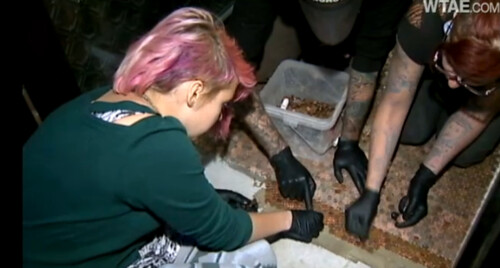
It took a Garfield woman hundreds of hours and hundreds of thousands of pennies to create a unique flooring.
"My floor is made out of about 250,000 pennies," said Mel Angst, who was looking for a creative way to tile the floor of Artisan, a tattoo gallery and coffee place on Penn Avenue.
Angst said the cost of materials is just $2,500. "Amazingly enough, it's a lot cheaper to glue money to your floor than to actually buy tile. It's about $3 a square foot," she said.
Angst said the people at a bank where she got the pennies thought it was "the weirdest request they've ever gotten."
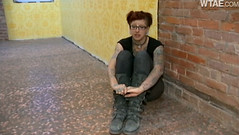 She had to find the right adhesive, and some dedicated workers who she recruited on Facebook to trade work for tattoo credit.
She had to find the right adhesive, and some dedicated workers who she recruited on Facebook to trade work for tattoo credit.
"Some days it was just me," she said. "I think the most we ever was 7, but on average, (we have) 3 or 4 people a day for about 10 to 16 hours a day for about three weeks straight, gluing these down."
"People are just shocked that we did it because it took about 300 man hours, which was crazy."
There's only two feet of pennies left to be put down, then the 800-square feet of President Abraham Lincoln's profile will be finished.
"We told everybody who put in more than 30 hours gets a penny tattoo, so we're going to get a penny tattoo when it's all said and done," Angst said.
To read the complete article, see:
250,000 pennies make for unique flooring
(www.wmur.com/news/250-000-pennies-make-for-unique-flooring
/-/9858204/17269298/-/151otbmz/-/index.html)
120,000 PENNIES ON A FLORIDA BILLBOARD
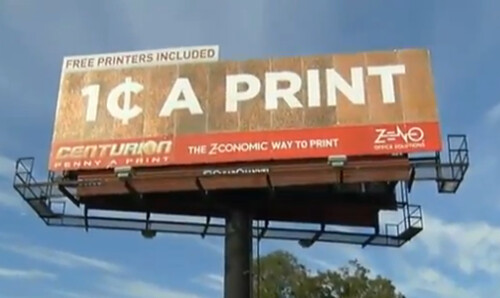
You may notice something a little different in the sea of typical billboards the next time you drive up I-4 near Orlando.
Just before the Lee Road exit in the eastbound lanes, you'll find a billboard made entirely of pennies.
Zeno Office Solutions is advertising its "Penny a Print" campaign with a 48-foot billboard featuring more than 120,000 pennies. Each coin was hand polished and individually glued to 12 panels.
Mary Lou Nethers says she likes the billboard, but says, "It might be a distraction to me because I'm very distracted by sparkly things."
Representatives from Tampa-based Schifino Lee Advertising tell Local 6 the billboard will stay in Central Florida for six months but will rotate to two other locations.
After the Penny a Print campaign is over, the money will be donated to a yet-to-be-determined charity.
To read the complete article, see:
Office company advertises 'Penny a Print' campaign in unique way
(www.clickorlando.com/news/Office-company-advertises-Penny-a-Print
-campaign-in-unique-way/-/1637132/17275486/-/y2xyxmz/-/index.html)
AND NOW, A PENNY-COVERED BATHROOM FLOOR
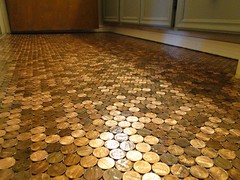 When Doreen Fisher wanted change in one of her bathrooms, she went to the bank and got 10,000 pennies. Now those coins cover the bathroom floor, some heads, some tails, some shiny and some well worn.
When Doreen Fisher wanted change in one of her bathrooms, she went to the bank and got 10,000 pennies. Now those coins cover the bathroom floor, some heads, some tails, some shiny and some well worn.
"I like the richness of the color variance in the floor," says the retired industrial engineer. "Whichever penny came up next is what went next."
Fisher got the spark from a Facebook thread that originated with a penny-tiled backsplash. She clicked through many other options and filed away the idea until a few weeks ago, when she was ready to tackle a bathroom in her New Braunfels home.
"Since it's not a primary bathroom, you can take some design liberties," Fisher says. The space, about 30 square feet, is divided into two rooms, one with the vanity and one with the toilet and tub. In all, it took about 9,700 pennies and somewhere between 20 and 40 hours of Fisher's time and patience.
Though some sources recommend cleaning the coins with an acid wash, she left them alone, removing only misshapen or green pennies from the mix. "I didn't want to rob the patina from the pennies."
After removing two layers of vinyl, Fisher painted the concrete floor with latex paint. She laid the coins out along a straight line in rows about 10 feet long and glued them down with Loctite Power Grab construction adhesive. Keeping the lines from veering required patience, and Fisher had to finesse rows around doorjambs to make the coins fit without cutting.
Once the floor was covered in coins, she sealed it with epoxy. The coating is thin, so bare feet still feel the texture and the cool copper. "In Texas, that's not a bad thing at all," Fisher says. Though she could have purchased flooring that cost less than $3 a square foot and was easier to install, it wouldn't match the panache of her pennies.
A hammered copper vessel sink complements the copper floor in the renovated bathroom. Fisher selected a Vetrazzo counter made from shards of cobalt blue glass, recycled from Skyy vodka bottles. Like the floor, the counter provides the curious eye with lots to explore.
To read the complete article, see: Floor made from pennies is priceless (www.mysanantonio.com/life/article/Floor-made-from-pennies-is-priceless-4023689.php)
FEATURED WEB PAGE: LIBERTY SEATED DIMES DIE VARIETIES
This week's Featured Web Page is suggested by David Lange - it's Liberty Seated Dimes – Die Varieties, 1837 - 1891, run by Gerry Fortin.After collecting and researching the Seated Dime series for over twenty years, I'm happy to present the 3rd reference book to the numismatic community. Through prior hardbound books, both Kamal Ahwash and Brian Greer advanced the knowledge and collector base for Liberty Seated Dimes. I've decided to take a different approach with the 3rd book given the advancements in computer and internet technology. Contained within the web-book is wealth of new information about Seated Dime die varieties and die states in a format that organizes the previous die varieties defined by Ahwash and Greer. There is an update to historical Coin World pricing trends, and great Seated Dime photography. Interested numismatists and casual browsers will enjoy access to a vast Liberty Seated Dime die variety collection formed with contributions from many collectors of the series.

www.seateddimevarieties.com/
